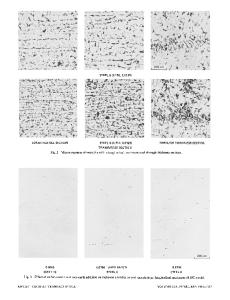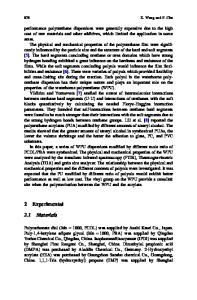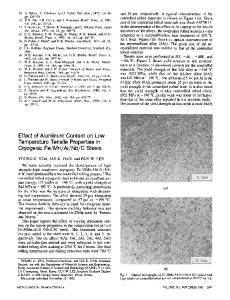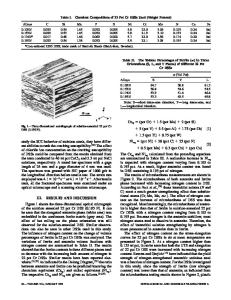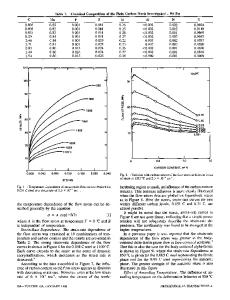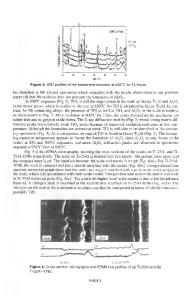The effect of trace-Ti content on the solubility of Nb and the consequent properties of Nb-bearing steels
- PDF / 427,563 Bytes
- 4 Pages / 597 x 774 pts Page_size
- 87 Downloads / 359 Views
above the Ar3 transformation temperature, Eq. [1] can be used to determine the contribution to strength from precipitation hardening, ~ppt. The results of this strength analysis for steels A and B are listed in Table III. It can be found that the higher strength of steel A than that of steel B is attributed to its relatively more prominent grain refinement and precipitation strengthening effect. The measured microhardness in the ferrite matrix listed in the last column of Table I also indicates that the ferrite maWix strength of steel A is higher than that of steel B owing to the more prominent precipitation strengthening effect. Figures l(a) and (b) show the transmission electron microscopy micrographs of fine precipitates in steels A and B, respectively. The observed fine precipitates are supposed to precipitate during or after rolling and result in grain refinement and precipitation strengthening of steels. Obviously, the amount of these effective fine precipitates in steel A is much more than that of steel B. Figure 1(c) shows the TEM micrographs of comparatively much coarser particles found in steel B. They are hundreds times larger than those shown in Figures l(a) and (b). These kinds of coarse particles are undissolved alloy carbonitrides during reheating and have negligible effect on the improving mechanical properties of steels. The measured X-ray spectrum of these undissolved alloy carbonitrides is shown in Figure l(d). It suggests that they are complex carbonitrides composed of Nb and Ti which could be expressed as Nb~Til x ( C y N l - y ) . From these analysis results, the lower strength of steel B can be attributed to the incomplete dissolution of Nb during slab reheating. This renders the microalloyed Nb ineffective in strengthening. Because the reheating practices of these two steels were essentially similar, the authors question whether there is any factor affecting the dissolution behavior of Nb carbonitrides in these two steels? Because both the Nb and Ti were detected in the undissolved carbonitrides and the trace-Ti content in steel B is twice that of steel A, it is proposed that a higher trace-Ti content in steel B might hinder the dissolution of Nb carbonitrides during reheating. In order to clarify the effect of trace-Ti content on the solubility of Nb in austenite, a solubility calculation computer program based on Hillert and Staffanson's model 1131 was developed to calculate the solubility of Nb~Ti~ (CyNi-y) complex carbonitride. For the sake of simplification, the complex carbonitride is assumed to be a regular solid solution of Nb(C,N) and Ti (C,N). Which means Ti and Nb and C and N atoms are assumed to mix independently on two interwoven sublattices of NaC1 structure. The detail description of the thermodynamics model and the calculation procedure has been published elsewhere. It41 Figure 2 shows the calculated dissolved Nb content as a function of dissolution temperature for steels with 0.2 pct C-0.02 pct Nb-0.005 pct N base composition and different Ti content. At lower solution tempe
Data Loading...

